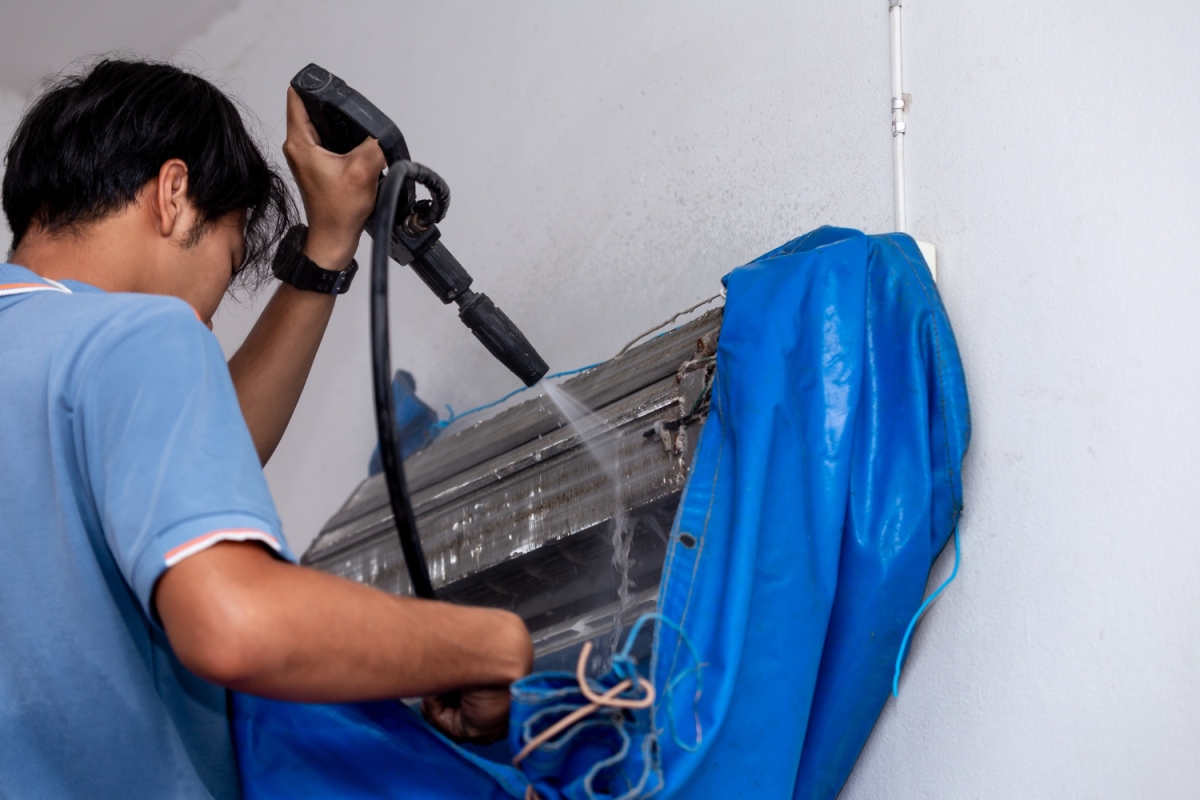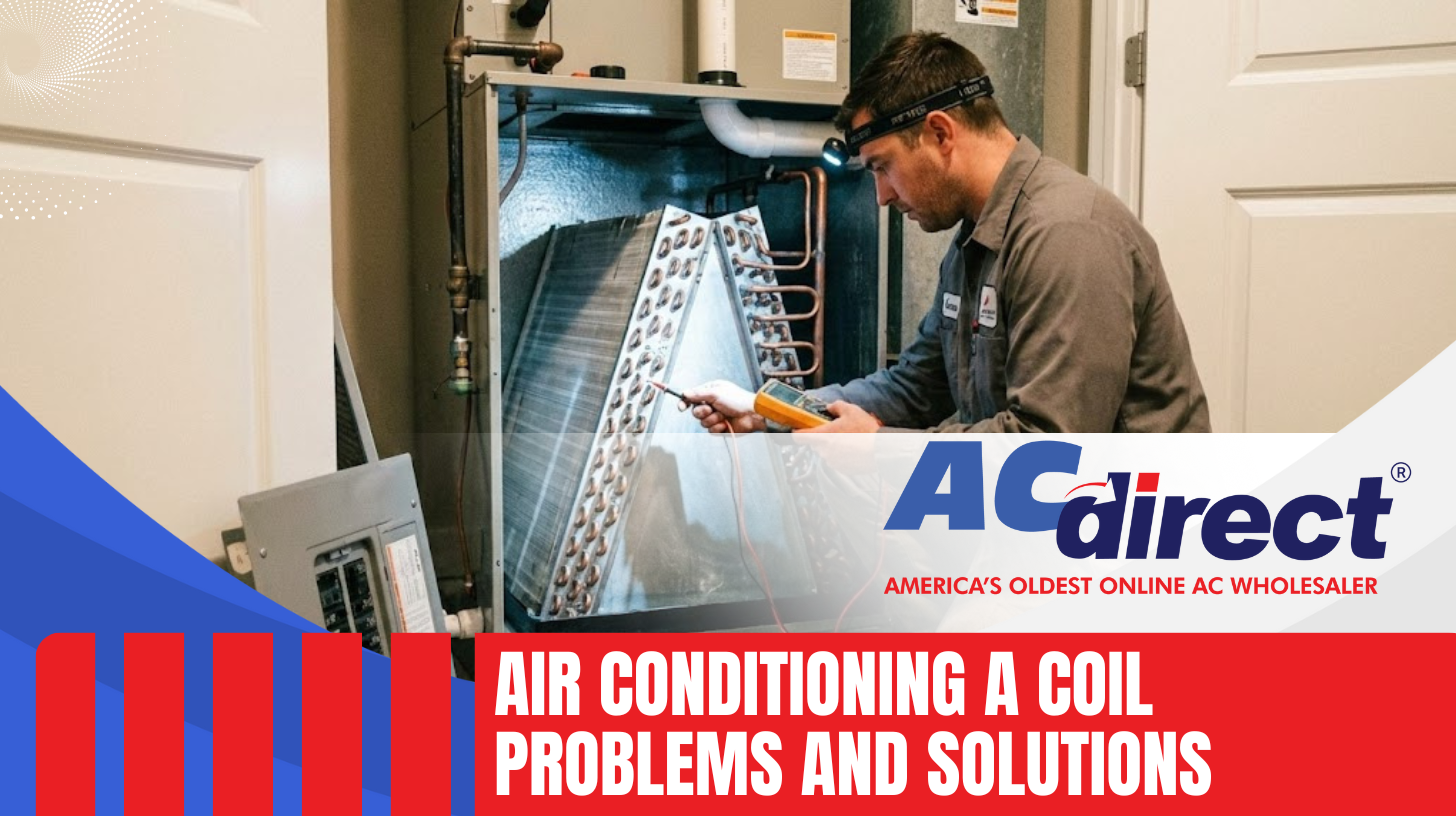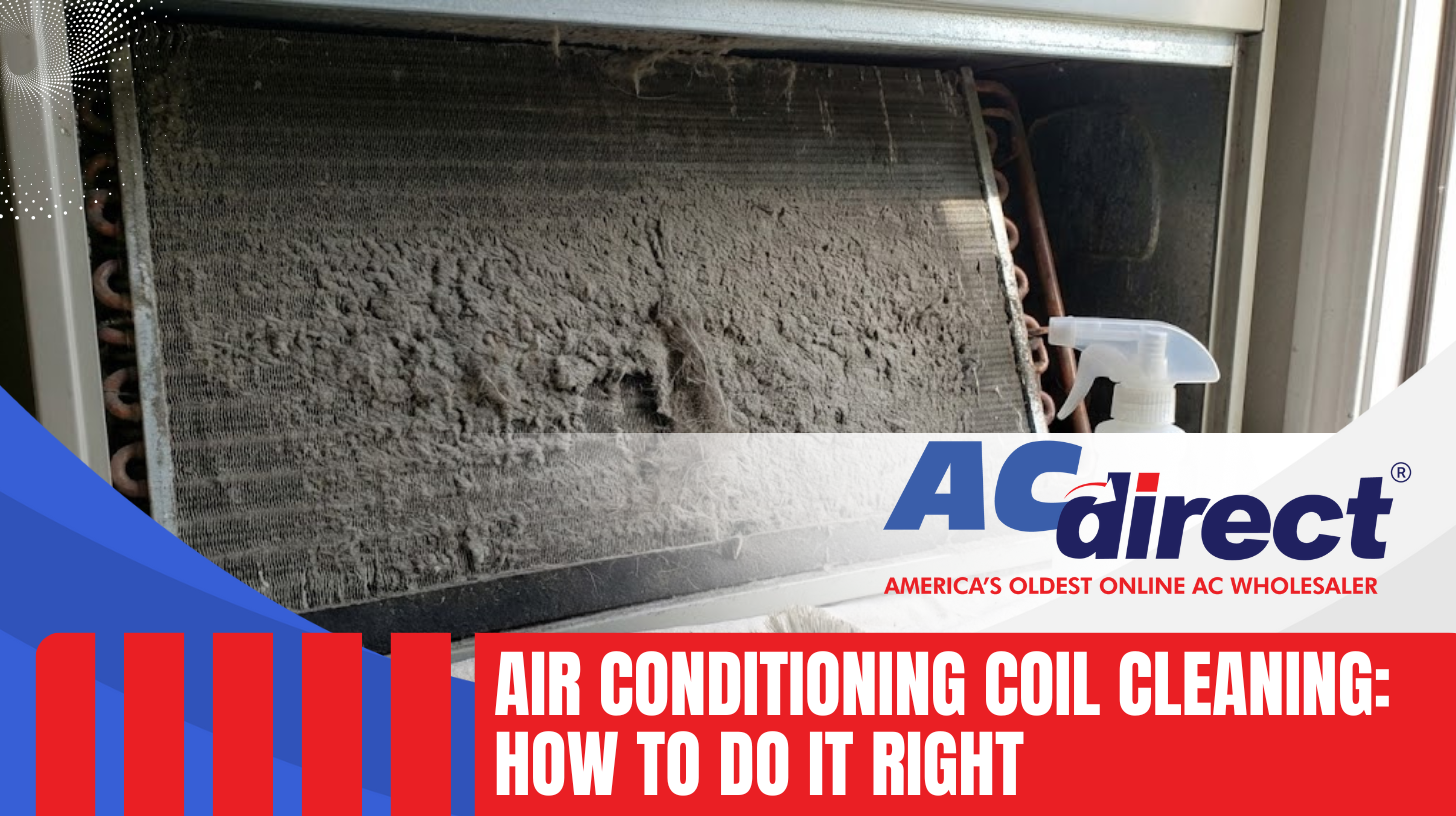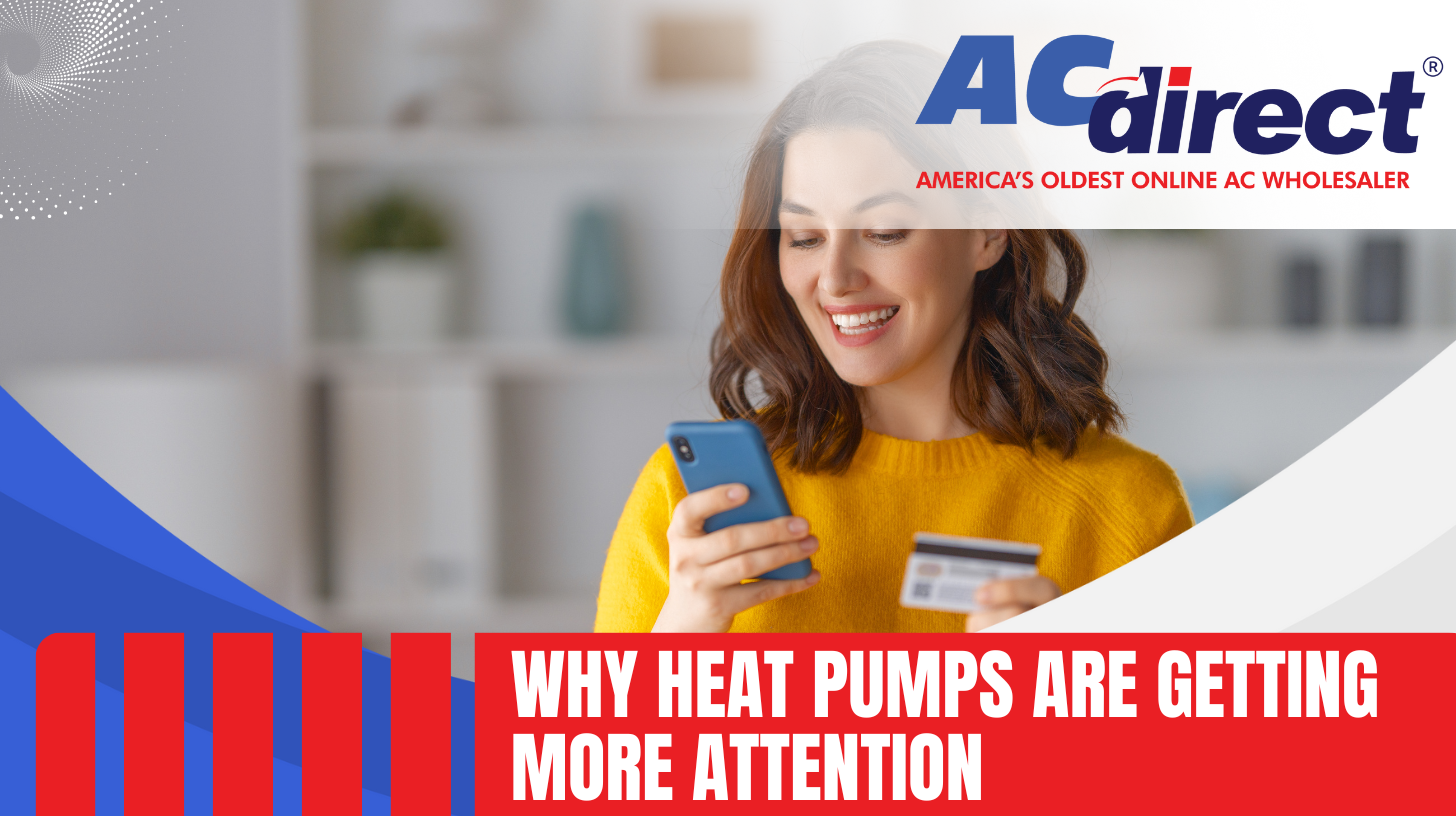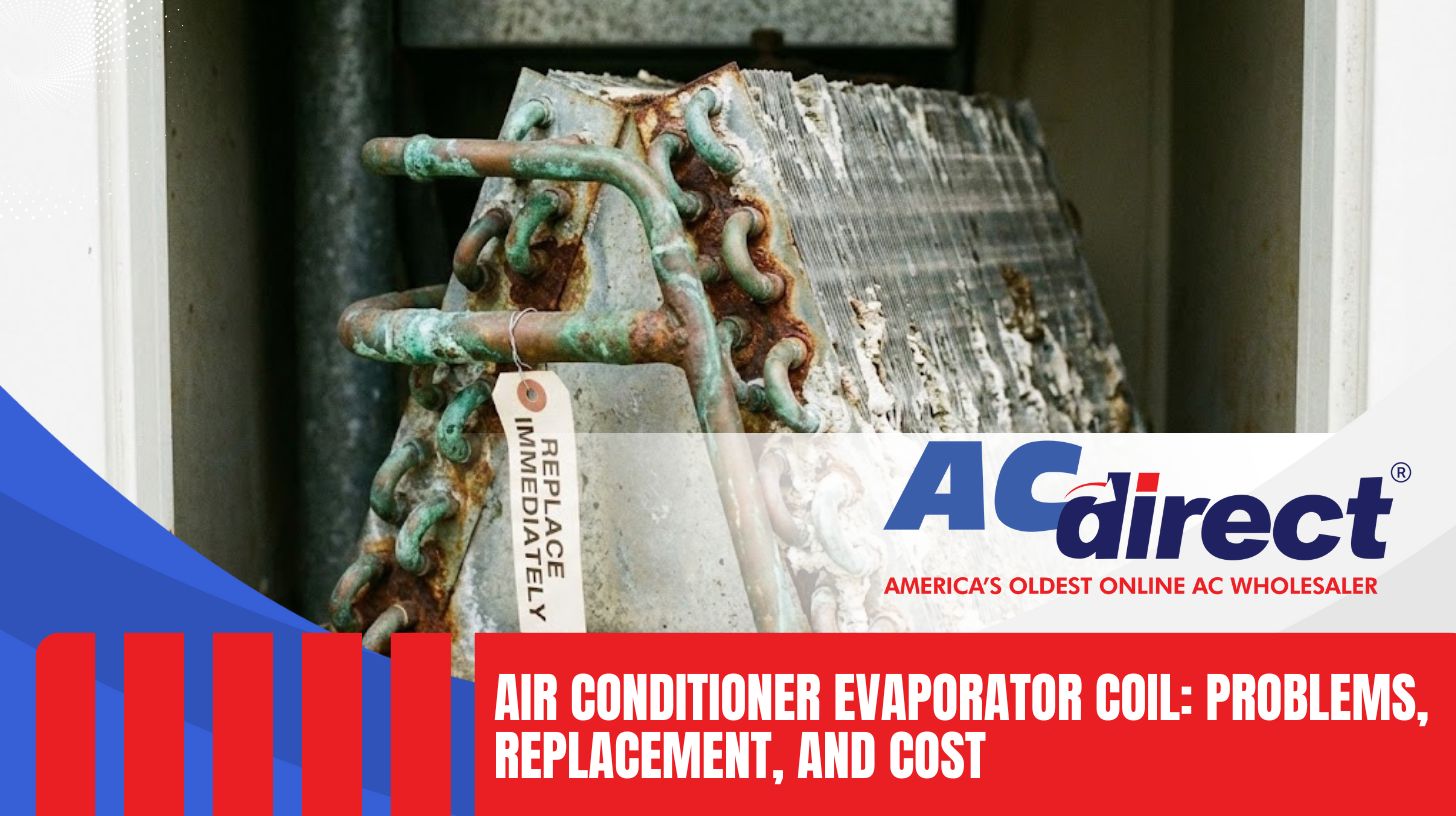UV Light is Your HVAC's Secret Weapon Against Germs!
-
 By
Michael Haines
By
Michael Haines
- Jan 2, 2024
UV Light is Your HVAC's Secret Weapon Against Germs!
Written by Michael Haines 01/02/2024 Ever wonder how the air in fancy hospitals stays cleaner than your gym locker? The answer might surprise you: it's not magic, it's science! And that science goes by the name of Ultraviolet (UV) light. Think of it as nature's invisible superhero, zapping those nasty germs lurking in your air ducts.
In recent years, the use of ultraviolet (UV) lights in HVAC systems has gained increasing attention as a means to improve indoor air quality. However, misconceptions and a lack of understanding about UV technology often lead to confusion. This guide aims to shed light on the science behind UV lights, dispel common myths, and provide guidance on selecting the right UV bulb for your HVAC system
But before we unleash this tiny terror on the microbial menace, let's unravel the mysteries of UV light. Imagine a rainbow, stretching from red to violet... UV light sits beyond the violet end, invisible to our eyes but packing a powerful punch. Like different notes on a musical scale, different types of UV light have different effects.
UV-A and UV-B are the tanning superstars, giving you that beach glow (but also sunburn if they get too excited). But our hero here is UV-C: the Terminator of the germ world.
Now, picture your HVAC system as a giant air highway. As air zips through the ducts, UV-C lamps silently stand guard, bombarding passing germs with their germicidal rays. These short, intense bursts of light scramble the bad guys' DNA, rendering them harmless and unable to spread disease. It's like a microscopic kryptonite for viruses and bacteria!
This germ-busting technology isn't new. Hospitals have been using UV light for decades to keep things sterilized. But guess what? It's finding its way into homes and buildings everywhere, thanks to its amazing benefits:
- Cleaner air, healthier you: Imagine breathing air free from flu-causing viruses and allergy-inducing mold spores. Yep, UV light can significantly improve your indoor air quality (IAQ), meaning fewer sniffles, less coughing, and overall, a happier, healthier you.
- Germ defense shield: Worried about catching the latest bug floating around? UV light acts like a protective force field, reducing your risk of airborne diseases like influenza and colds.
- One zap at a time: Knowing your air is getting a thorough germ-fighting treatment can bring some serious peace of mind. It's like having a silent guardian angel keeping things fresh and healthy right inside your home.
Some folks worry about UV light hurting your skin or eyes (ouch!), or creating harmful ozone gas (that's not good either!). But here's the thing: the UV used in HVAC systems is specially designed to be safe, with proper shielding and precautions to keep those nasty side effects at bay. Plus, scientific research backs up its effectiveness and safety, so you can breathe easy knowing you're not trading germs for ozone clouds.
And as for those whispers about UV not being effective? They're just myths floating around like dust bunnies. Shadows, airflow, and even lamp aging won't stop this microscopic monster slayer. Studies have shown that UV light can kill up to 99.9% of airborne germs, making it a true champion in the fight for clean air.
So, there you have it! UV light in HVAC might sound like sci-fi, but it's real, it's safe, and it's changing the way we breathe – for the better. Think of it as your own personal microscopic superhero, keeping your air cleaner and your health happier, one invisible zap at a time.

What is UV Light?
Imagine the light spectrum like a vast rainbow, stretching from vibrant reds to cool violets. But beyond violet lies an unseen realm: the world of Ultraviolet (UV) light. This invisible force, while harmless to our eyes, packs a mighty punch when it comes to its effects on living organisms.
UV lights emit electromagnetic radiation with wavelengths shorter than those of visible light. UV-C light, with wavelengths between 200 and 280 nanometers (nm), is the type used in HVAC systems because of its ability to damage the DNA of microorganisms, rendering them incapable of reproduction. This germicidal property makes UV-C an effective tool for controlling indoor air quality.
Think of the spectrum as a musical scale, with each type of radiation playing a different tune. Visible light, the notes we can see, allows us to admire sunrises and rainbows. But venture beyond violet, and you'll encounter the different "octaves" of UV light:
- UV-A: The gentle giants of the bunch, UV-A rays warm our skin and contribute to that beachy tan (but also sunburn if we overdo it!).
- UV-B: These energetic notes pack a stronger punch, directly impacting DNA and contributing to sunburn and skin cancer.
- UV-C: UV-C light, with its short, intense bursts, acts like a kryptonite for germs. Its high frequency disrupts and scrambles the DNA of viruses and bacteria, rendering them powerless to spread disease.
Different UV wavelengths have different effects. UV-A light contributes to suntanning, UV-B light causes sunburn, and UV-C light, with wavelengths between 200 and 280 nm, is the most germicidal type of UV light used in HVAC systems for its ability to disrupt the DNA of microorganisms.
Among these ultraviolet warriors, UV-C reigns supreme when it comes to germicidal power. Its wavelength, between 250-275 nanometers, is like a magic bullet for microbes, targeting their genetic core and leaving them deactivated and unable to cause harm. This germicidal prowess is exactly why UV-C finds its way into hospitals, water purification systems, and increasingly, your very own HVAC system!
Application of UV Light in HVAC Systems
UV light isn't just a sci-fi concept for futuristic homes. It's been used for decades in hospitals and sterile environments to keep things squeaky clean. But now, this germ-busting technology is becoming a familiar face (well, technically invisible face) in everyday buildings like homes and offices.
The effectiveness of UV lights in HVAC systems depends on several factors, including the wattage of the bulb, the strength of the UV-C emission, and the airflow in the system. Higher wattage bulbs and stronger UV-C emissions will generally be more effective at disinfecting the air. It's crucial to ensure that the UV bulb is compatible with the airflow rate of your HVAC system for optimal performance.
Picture your HVAC system as a giant air highway, and imagine tiny, invisible germs hitchhiking along for the ride. Enter the UV heroes! Strategically placed lamps within the ducts silently bombard these microbial hitchhikers with their germicidal rays. Think of it as a microscopic security checkpoint, zapping unwanted passengers before they can wreak havoc in your indoor air.
But how does this magical light-show get integrated into your existing HVAC system? There are two main methods:
- In-duct irradiation: These UV lamps shine directly on the air flowing through the ducts, ensuring maximum germ exposure. It's like a microscopic tunnel wash for your air!
- Coil irradiation: Here, the UV lamps target the evaporator coils, a prime breeding ground for moisture-loving mold and bacteria. By keeping these coils clean and germ-free, you improve your system's efficiency and prevent the spread of airborne contaminants.
And what are the benefits of welcoming these microscopic vigilantes into your HVAC system? Well, buckle up, because the perks are plenty:
- Cleaner air, healthier you: Imagine breathing air free from allergy-inducing mold spores, flu-causing viruses, and other nasty airborne nasties. UV light significantly improves your indoor air quality (IAQ), meaning fewer sniffles, less coughing, and overall, a healthier, happier you.
- Reduced disease risk: Worried about catching the latest bug floating around? UV acts like a protective force field, reducing your risk of airborne diseases like influenza and colds. Think of it as an invisible shield guarding your health!
- Enhanced building well-being: Cleaner air not only benefits your health, but also creates a more pleasant and productive environment for everyone in the building. Reduced odors, fewer allergy triggers, and overall improved IAQ lead to happier occupants and potentially even reduced absenteeism.
UV light technology is still evolving, and research is ongoing to optimize its effectiveness and safety. Always consult with a qualified HVAC professional to discuss the best options for your specific needs and ensure proper installation and maintenance.
By harnessing the power of UV light, we can create cleaner, healthier, and more enjoyable indoor environments for everyone. So, let's shine a light on a brighter future for indoor air!
Here are a couple of studies and a fact sheet to improve your knowledge about UV light vs. germs.
This study investigates the potential of far-ultraviolet C (far-UVC) light as a tool to prevent infections in surgical wounds. Researchers found that 222-nm far-UVC light effectively killed drug-resistant bacteria like MRSA on skin incisions in mice, without harming the skin itself. This suggests far-UVC could be a promising method for reducing surgical site infections caused by airborne bacteria.
This study tests the effectiveness of a portable UV-C device called Biosept Home© in hospital surface decontamination. The device successfully killed colonies of various pathogenic bacteria isolated from different hospital surfaces, reducing the overall microbial count. This suggests Biosept Home© could be a promising alternative to traditional chemical disinfectants due to its non-toxic and residue-free nature.
Living in a mobile home?
Be mindful of the air you breathe! This CDC fact sheet dives into the hidden dangers of indoor air pollution in trailers, including mold, pet dander, chemicals, and even carbon monoxide. Learn how these common culprits can trigger headaches, allergies, and even lung problems, especially for those with existing conditions.
Don't suffer in silence! The sheet offers simple tips like opening windows, cleaning regularly, and controlling moisture to keep your air fresh and healthy.
If you suspect mold or gas leaks, know the steps to take for safe removal. Remember, breathing clean air is vital for your well-being. For more information or if you're considering moving out due to air concerns, the CDC and FEMA contact numbers are provided. Take control of your indoor air environment for a healthier, happier life!
Common Misconceptions and Concerns About UV
Common myths about UV lights include the belief that all UV lights are equally effective and that they kill all microbes. In reality, the effectiveness of UV lights varies, and UV-C light does not kill microbes but damages their DNA to prevent reproduction. Some microbes may be more resistant to UV-C light than others. Combining UV light with other methods of indoor air quality control is essential
With any powerful technology, whispers of concern are bound to arise. When it comes to UV light in HVAC, some common misconceptions and concerns include:
- Lack of awareness: Many people are simply unaware of this technology's existence in their own homes or buildings. Raising awareness and educating occupants about the benefits and safety of UV can go a long way in alleviating anxieties.
- Safety concerns: Skin and eye exposure to UV light can be harmful, but the UV lamps used in HVAC systems are shielded and properly contained. Additionally, ozone generation, a concern with some UV technologies, is minimal with the safe UV-C lamps used in HVAC.
- Myths about effectiveness: Some folks worry about shadows, airflow, or lamp aging hindering UV's effectiveness. But research shows that even with these factors, UV can still kill up to 99.9% of airborne germs. Proper system design and maintenance can further optimize effectiveness and address these concerns.
It's important to remember that scientific evidence and thorough research back up the safety and efficacy of UV technology in HVAC systems. Addressing these concerns openly and transparently helps build trust and encourages broader adoption of this powerful air purification tool.

Making UV in HVAC Real: Examples, Safety, and Beyond
Shining a Light on Success Stories
Let's bring UV technology out of the shadows and into real-world settings. Imagine a bustling school: filled with kids, laughter, and unfortunately, the occasional cold bug. By installing UV lamps in the HVAC system, the school effectively reduces airborne viruses, leading to fewer sniffles, less absenteeism, and a healthier learning environment. Happy teachers, happy students, happy classrooms – that's the power of UV in action!
But it's not just schools reaping the benefits. Offices can enjoy improved productivity and reduced sick leave when employees breathe cleaner air. Hospitals, naturally, see a significant decrease in the spread of hospital-acquired infections thanks to UV's germicidal prowess. And in single-family homes, imagine saying goodbye to those pesky allergy triggers and enjoying fresher, cleaner air year-round. These are just a few examples, but the possibilities are vast!
- Clearwater, Florida: Dunedin High School installs UV lamps, leading to a 30% drop in student absenteeism due to illness (Source: Tampa Bay Times)
- Seattle: School reports a 50% decline in flu cases after UV implementation (Source: Seattle Times)
- Denver: Improved air quality in classrooms leads to increased student concentration and higher test scores (Source: Denver Public Schools)
Beyond the Classroom
- Chicago: Large office building sees a 25% reduction in employee sick leave after integrating UV air purification, boosting productivity and revenue (Source: SAE )
Hospitals
- Detroit: Hospital experiences a 40% decrease in HAIs thanks to UV technology (Source: Detroit Free Press)
- Los Angeles: LA hospital sees similar success, reducing HAIs by 40% (Source: LA Times)
Homes Sweet Homes
- Austin, Texas Families report reduced allergy symptoms and improved sleep quality after installing UV lamps in home HVAC systems (Source: Consumer Reports)
Safety Concerns and Beyond
- Proper installation, maintenance, and avoiding direct exposure are crucial for safe UV implementation.
- Qualified HVAC professionals are key partners in navigating this technology safely and effectively.
Beyond air quality: UV's reach extends far beyond just keeping our air clean. Take water purification, for example. Here in Germany, the Helmholtz Centre for Environmental Research is investigating ways to optimize UV technology for even more effective and sustainable water treatment. (Source: Helmholtz Centre for Environmental Research)
Researchers in California are developing UV-C LEDs with reduced ozone emissions, making the technology even more environmentally friendly. (Source: University of California, Santa Barbara)
Choosing the Appropriate UV Bulb for Your System
The best UV bulb for your HVAC system depends on the size of your system, the airflow rate, and the desired level of disinfection. Consulting with an HVAC professional is crucial to determine the specific needs of your system and to ensure the right UV bulb is selected and correctly installed.
The Lifespan of UV Bulbs
UV bulbs typically have an effective lifespan of approximately 9000 hours or one year. However, their efficacy diminishes over time. Regular replacement is vital to maintain optimal performance. Some bulbs may have longer lifespans, but always check the manufacturer's recommendations for specific replacement intervals.
Safety First, Always
While UV-C is a superhero against germs, we still need to remember it's a superhero, not a party trick. Direct exposure to UV light can be harmful, so the lamps used in HVAC systems are always shielded and contained. Think of it like a high-tech force field keeping the good guys (UV) in and the bad guys (skin and eyes) out.
Never look directly at an active UV light. UV-C light can damage eyesight and cause other health problems. When handling and maintaining UV bulbs, it's important to take precautions, such as wearing UV-protective gloves and ensuring that a qualified HVAC technician installs and services the bulbs.
But just like with any powerful tool, knowledge is power. Educating users about proper system operation and maintenance procedures goes a long way in ensuring peace of mind. Simple tips like never looking directly at the lamps or avoiding the immediate vicinity when the system is on can keep everyone safe and happy. Remember, safety is always a top priority, and responsible use is key to unlocking the full potential of UV technology.
Beyond the Buzz
It's important to remember that UV, while a powerful weapon in the fight for clean air, isn't a magical one-size-fits-all solution. Like a well-trained team, it works best alongside other air quality heroes. Proper ventilation ensures fresh air constantly enters the building, air filtration tackles dust and allergens, and addressing moisture issues prevents mold growth.
All these players, working together, create a truly winning strategy for healthy indoor air.
So, don't let UV be a lone fighter – give it the support it deserves! Combine it with proper ventilation, effective filtration, and smart moisture management for the ultimate indoor air quality dream team. By acknowledging its limitations and appreciating its strengths, we can harness the power of UV technology to create healthier, happier spaces for everyone.
UV and HVAC
This appendix serves as your treasure trove of resources and detailed information, for our series of articles delving deeper into the world of UV technology and its applications in HVAC systems.
Glossary of Terms & Abbreviations
- A-C: Alternating Current (https://en.wikipedia.org/wiki/Alternating_current)
- AHU: Air Handling Unit (https://en.wikipedia.org/wiki/Air_handler)
- ASHRAE: American Society of Heating, Refrigerating and Air-Conditioning Engineers (https://www.ashrae.org/)
- BTU: British Thermal Unit (https://en.wikipedia.org/wiki/BTU_%28disambiguation%29)
- CADR: Clean Air Delivery Rate (https://www.airpurifierfirst.com/blog/air-purifier-cadr-ratings-complete-guide/)
- COI: Coefficient of Performance (https://energyeducation.ca/encyclopedia/Coefficient_of_performance)
- EPA: Environmental Protection Agency (https://www.epa.gov/)
- HVAC: Heating, Ventilation, and Air Conditioning (https://en.wikipedia.org/wiki/Heating,_ventilation,_and_air_conditioning)
- IAQ: Indoor Air Quality (https://en.wikipedia.org/wiki/Indoor_air_quality)
- LED: Light Emitting Diode (https://en.wikipedia.org/wiki/Light-emitting_diode)
- MERV: Minimum Efficiency Reporting Value (https://www.ashrae.org/technical-resources/filtration-and-disinfection-faq)
- NBS: National Bureau of Standards (https://www.nist.gov/)
- NPV: Net Present Value (https://en.wikipedia.org/wiki/Net_present_value)
- O&M: Operation and Maintenance (https://en.wikipedia.org/wiki/O%26M)
- PM-10: Particulate Matter less than 10 micrometers in diameter (https://www.epa.gov/air-trends/particulate-matter-pm10-trends (https://en.wikipedia.org/wiki/Particulate_pollution))
- ROI: Return on Investment (https://en.wikipedia.org/wiki/Return_on_investment)
- UV-A: Ultraviolet A radiation (315-400 nm)
UV-B: Ultraviolet B radiation (280-315 nm)
UV-C: Ultraviolet C radiation (200-280 nm)
(https://www.sciencedirect.com/topics/medicine-and-dentistry/ultraviolet-radiation) - VOCs: Volatile Organic Compounds (https://en.wikipedia.org/wiki/Volatile_organic_compound)
Resources for Further Exploration
Research Papers:
- "Ultraviolet Air and Surface Treatment in HVAC Systems" (ASHRAE Standard 189.1):
- "Efficacy of Ultraviolet C Irradiation for Inactivating Airborne Bacteria and Viruses in Upper Room Air: A Systematic Review and Meta-Analysis" (NCBI)
- "Ultraviolet C light inactivation of airborne viruses for air disinfection" (NCBI)
Technical Standards:
- ASHRAE Standard 189.1
- International Organization for Standardization (ISO) 15005: Indoor air – General requirements for indoor air quality measurement and assessment
- American Conference of Governmental Industrial Hygienists (ACGIH) Threshold Limit Values (TLVs) for Chemical Substances
Industry Associations:
- National Comfort Institute (NCI)
- Air Conditioning Contractors of America (ACCA)
- National Air Duct Cleaning Association (NADCA)
Check back for our continuing article series about Ultraviolet Technology in HVAC. Thanks for reading!
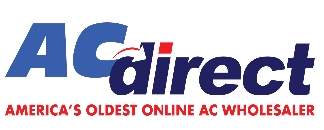
 and now, NASCAR Racing Sponsor
and now, NASCAR Racing Sponsor





